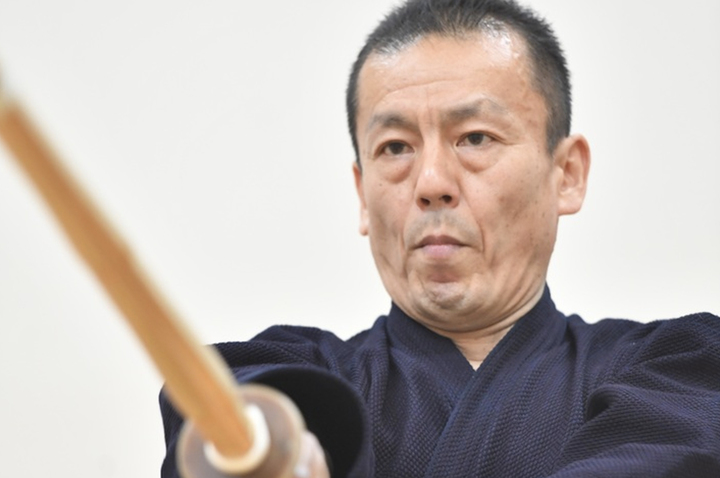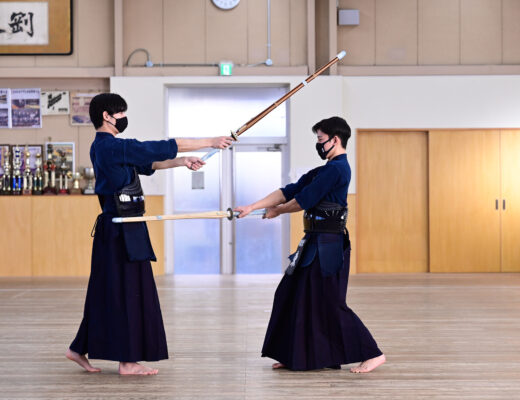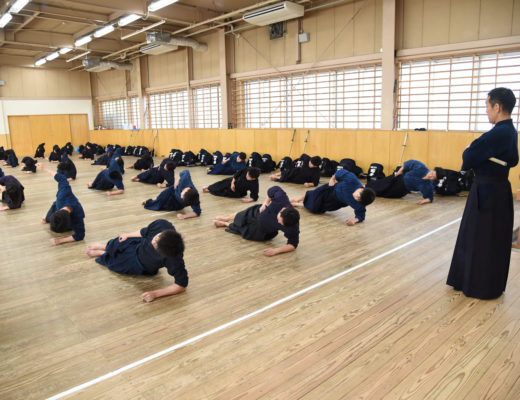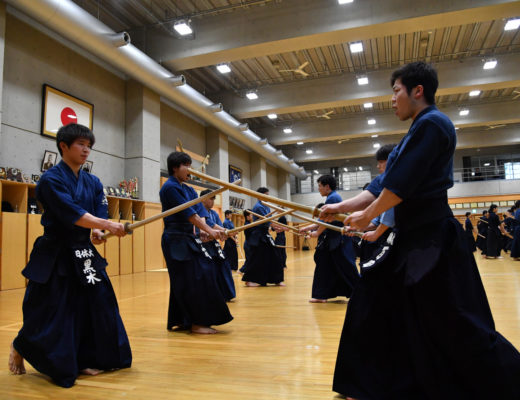2020.7 KENDOJIDAI
Mastering the basics of striking is done through Suburi. “In order to secure opportunities when they present themselves with full commitment, it is important to build a solid foundation through Suburi”, says Kadono. If you can recognize the origin of the striking motion based on Suburi with Suri-ashi, the quality of your strikes will surely improve.
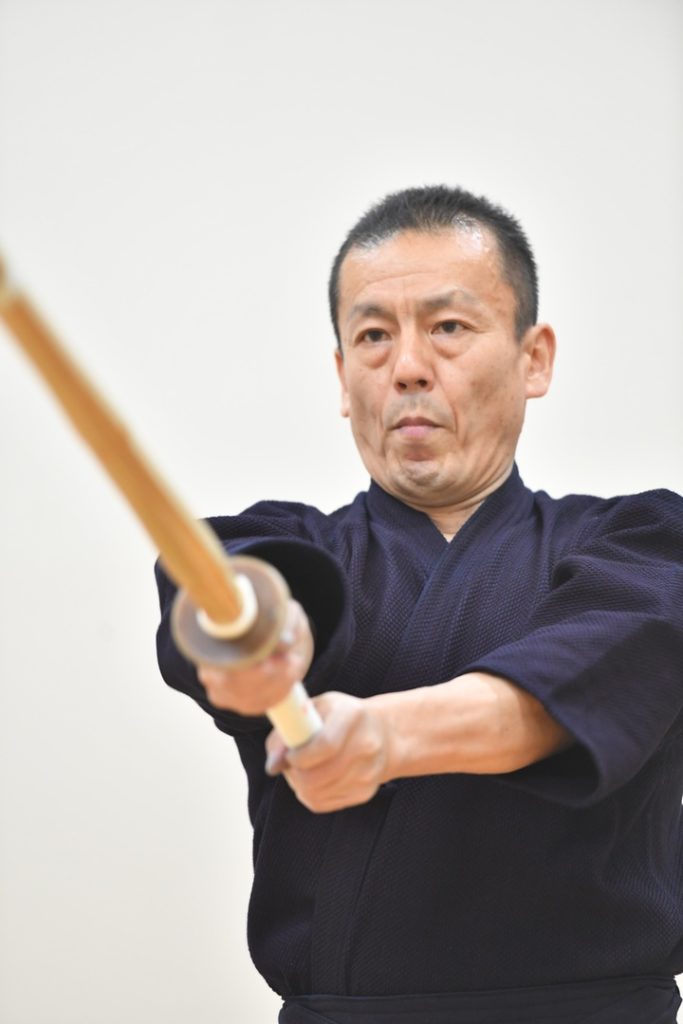
Kadono Masato, 8th Dan
Born in 1965 in Chiba Prefecture. From Noda Kita High School (currently Noda Chuo High School), he went on to study at the newly opened International Budo University among the first generation of students. After graduating, he became a teacher and currently works at Johoku Junior and Senior High School.
Men strikes with Suri-ashi as emphasized by Komorizono Masao Sensei of International Budo University
Kendo is about facing your opponent and catching an opening during offense and defense. As we all know, we can do Keiko and Shiai thanks to our opponents, and selfish Kendo is not valued. However, Kendo that is manipulated and exploited by our opponent will not lead to victory.
In Kendo, we aim to sense the opponent’s state of mind, disrupt him with strong Seme and seize the opportunity. Therefore, you must create a foundation that allows you to perform a technique without hesitation when you feel the need to do so. To build this foundation, one must practice Suburi. Nowadays, it is not always possible to do Keiko against others, but we are given the opportunity to reevaluate what Kendo is about.
When I thought about what I could do in this environment, I concluded that Suburi would be good. Suburi is a very important Keiko method for mastering sword handling and is a great way to learn how to use the sword and body in unison, to learn the blade angles for correct striking and to learn how to use Tenouchi.
Furthermore, I believe that in order to perform high quality Suburi, you must be aware of the fact that the origin of the striking action lies in Suburi with Suri-ashi. I believe that by being aware of valid strikes while doing Suburi and striking the opponent in Jigeiko the same way as in Suburi, we can learn how to strike without disrupting our posture and with a drive from the waist.
When striking with Fumikomi-ashi, the left foot doesn’t move at the moment of striking and is then pulled back as quickly as possible. On the other hand, in Suburi with Suri-ashi, the left foot is pulled at the same time as the Shinai stops. If you learn to pull up the left leg properly in Suburi, you will be able to do it quickly during the strikes with Fumikomi too, which will help your body with stability and add sharpness to your strikes.
I entered the International Budo University as one of its first students and I received instruction from my chief professor, Komorizono Masao (Hanshi 9th Dan) on Men strikes with Suri-ashi. Komorizono Sensei’s instruction focused on the basics, and I remember that in my first year, I did not compete in tournaments, but rather was trained in Men strikes with Suri-ashi.
As a recent graduate of high school, it was difficult for me to understand why he used Suri-ashi instead of Fumikomi, but looking back now, I realize that the origin of the striking motion is Suburi with Suri-ashi. By repeating Suburi, you can learn how to correctly transfer your center of gravity. If you can follow through with your strike in one motion by adding Fumikomi, it will be an Ippon that everyone can appreciate.
The moment you catch the striking target with Fumikomi, your left foot remains in place, but if you learn to quickly pull your left foot back with Suburi, your body will have a better posture at the moment of striking
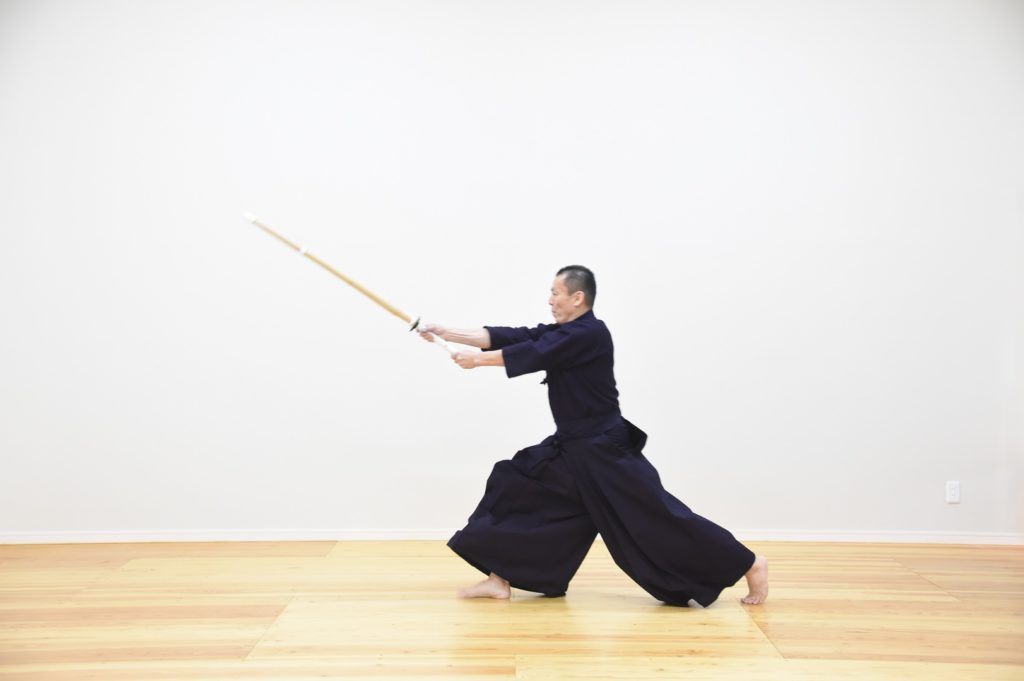
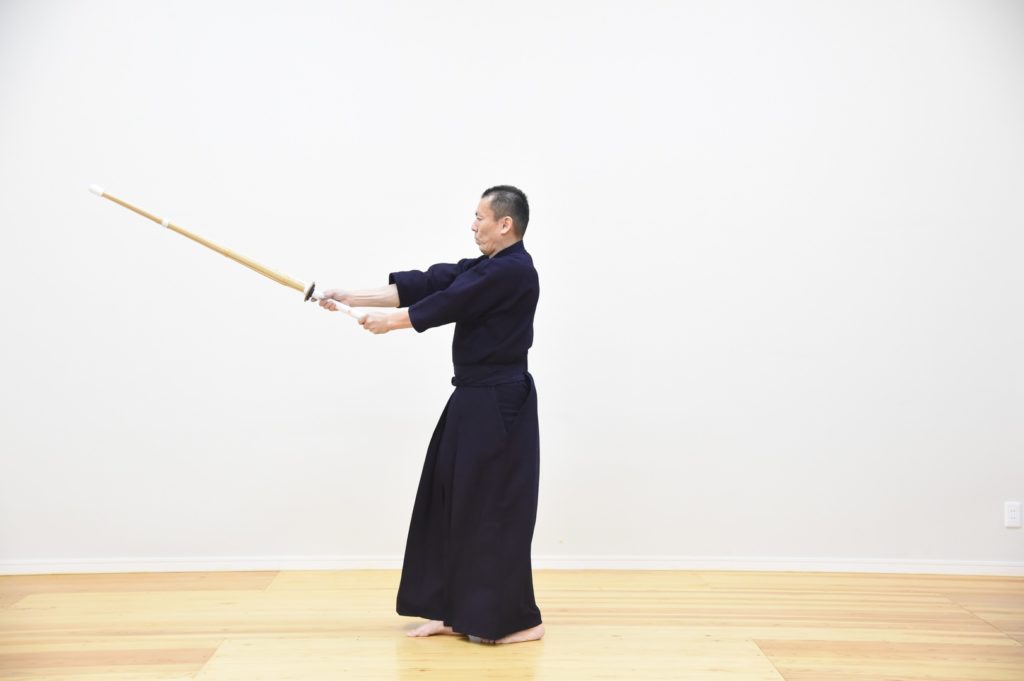
Okuri-ashi is performed as if a wall was moving and is connected to Fumikomi-ashi
Suburi is based on body movement and Shinai handling. There is a tendency to focus on the upper body (Shinai handling) rather than the lower body (feet movement), but a solid Kamae of the feet leads to powerful strikes. It is important to practice so that your footwork is always dynamic.
There are four types of footwork: Ayumi-, Okuri-, Tsugi-, and Hiraki-ashi but all of them are done with Suri-ashi. The left heel should be lifted slightly off the floor to prevent your body from freezing. However, in my case, I do not lift the left heel off the floor, but rather I lower it from where it is lifted to get a good grip on the floor.
For Okuri-ashi to the front and back, I keep the angles of my body in mind and I always move as if I were a moving wall. If you can advance your Maai like an approaching wall, this will become Seme in a competitive scenario. When moving forward, push out the right foot with the left foot and try to drive the center of gravity from the waist. Fumikomi-ashi, a foot movement to strike the opponent from Issoku Itto no Maai, is a variation of Okuri-ashi. As with the Okuri-ashi, the right foot moves first, but the sharp kick of the left foot makes it possible to make a strong Fumikomi with the right foot. Matching the sensation of the Okuri- and Fumikomi-ashi will lead to waist-driven strikes.
Performing Okuri- and Fumikomi-ashi as if being a moving wall
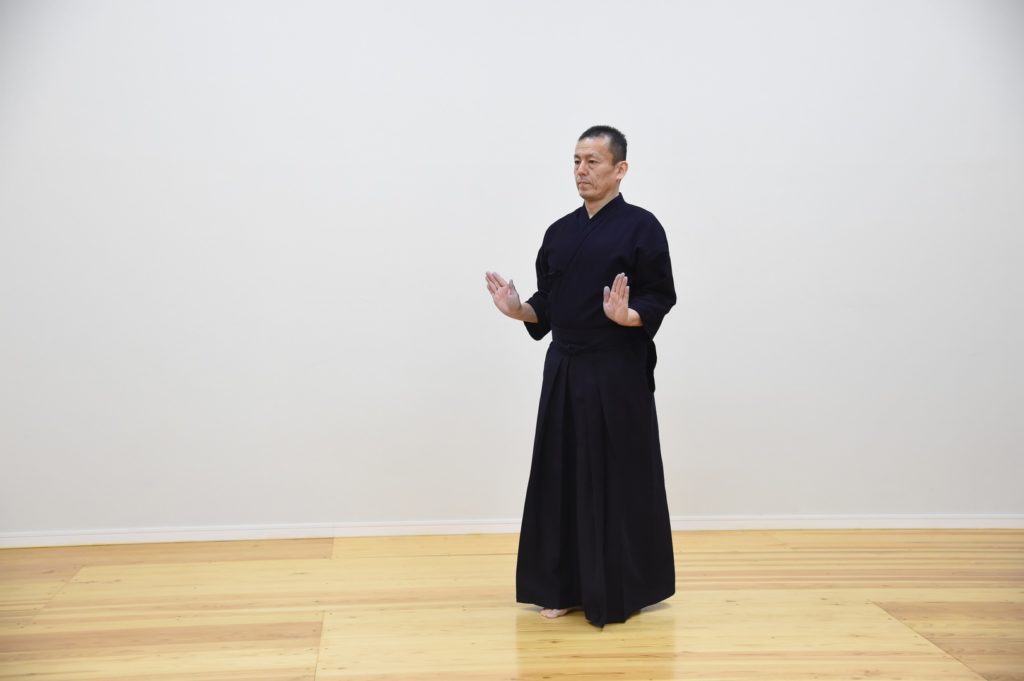
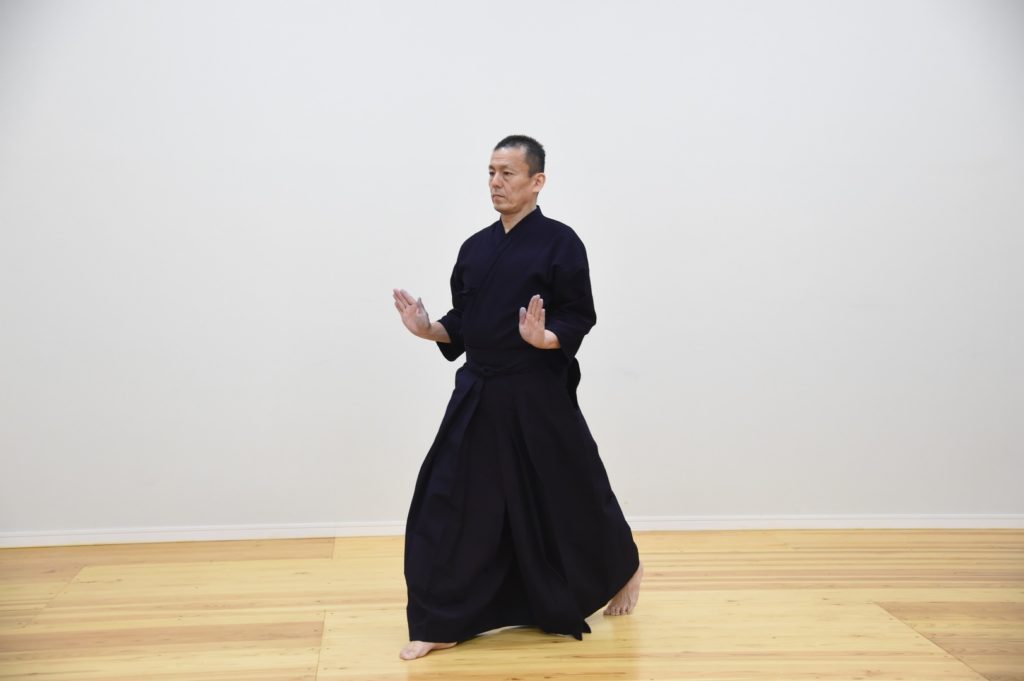
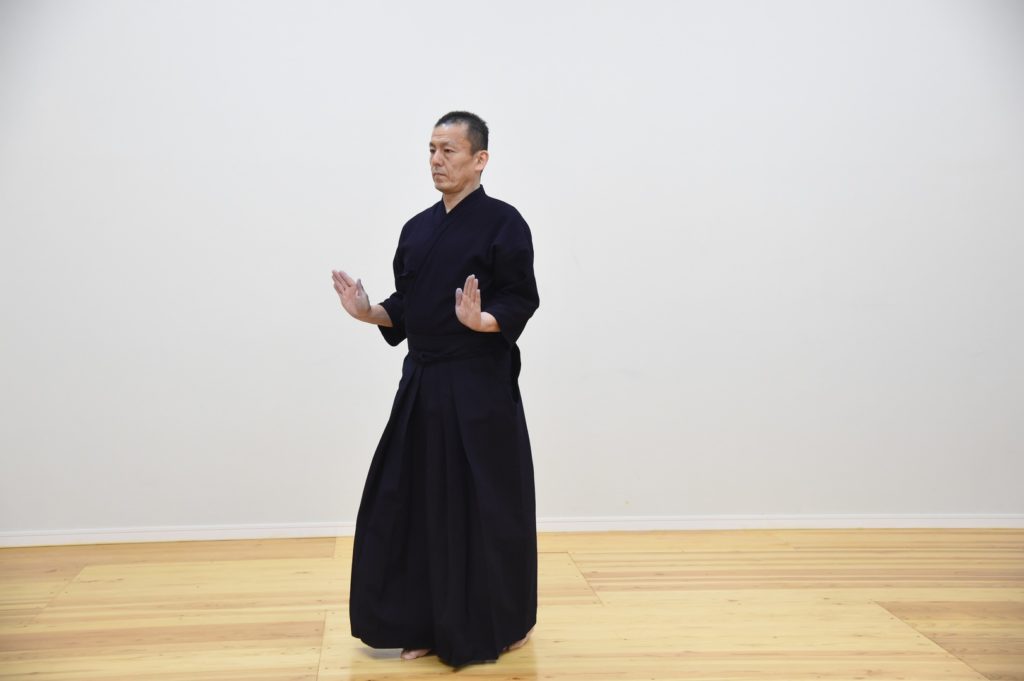
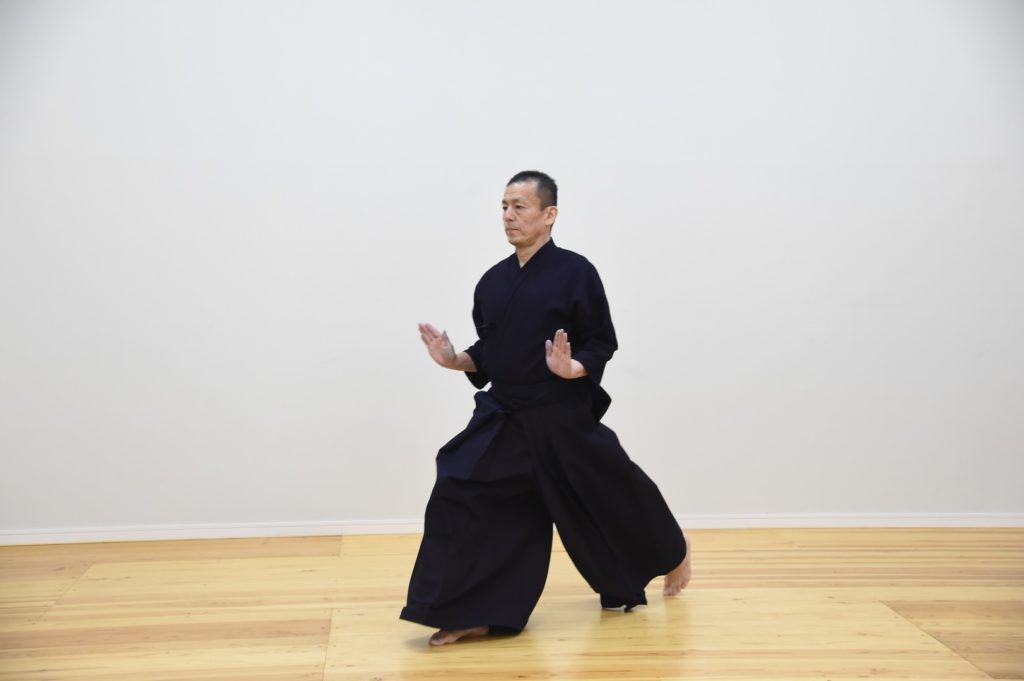
The rest of this article is only available for Kendo Jidai International subscribers!

